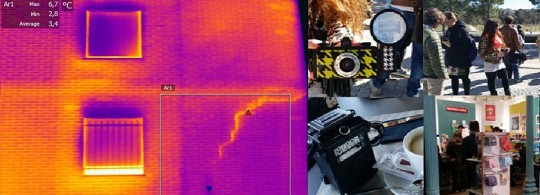
Saturday 14 March saw the staging in Madrid Río of a photography workshop with LOMO cameras organised by the PRENDE Project and its platform Tu casa Es Más (Your House Is More) in collaboration with Lomography Spain and Caprile Photo. The initiative is posited as an opportunity for making participants reflect on the state of our country’s building stock and the possibilities for refurbishment it offers both in terms of energy savings and of accessibility, appreciation in value of buildings and aesthetic improvement of the surroundings.
LOMO cameras originated in Russia in 1982, when general Igor Petrowitsch Kornitzky and comrade Michail Panfilowitsch Panfiloff, director of the LOMO optics factory, decided to copy the design of a Japanese mini-camera and produce it in large quantities for the Soviet people. This compact camera, the LC-A, had a wide-angle lens and an incorrect design that caused colour aberrations, a darkening effect of the edges and excessive supersaturation of colours. Added to this was an automatic mode that caused frequent halos due to overexposure and rudimentary focusing that not always accomplished its purpose.
The LC-A was beginning to fade into oblivion when two Viennese students, Matthias Fiegl and Wolfgang Stranzinger, decided to visit Czechoslovakia on their holidays and while there bought two cameras in a flea market. When they developed the film, to their surprise they discovered photographs that were in and out of focus, luminous, saturated and fresh. Both students then decided to set up a business with these cameras that has successfully continued until the present day.
Other little-known but equally interesting images are those taken with thermographic cameras. They photograph the loss of energy of a building by reflecting it on a scale of colours ranging from red for maximum loss to blue for minimum loss. They operate by registering infrared radiation, which is invisible to the human eye, and converting it into an image in which the scale of colours represents the different intensities of thermal radiation.
The usefulness of thermographs lies in the fact that they allow us to visualise and understand in a highly intuitive manner the areas through which a building is losing energy. There are also technical solutions that allow the situation to be resolved and an old building to be converted into an efficient one. Yet to be addressed is the raising of awareness among users of the benefits that refurbishment can bring. The idea behind the LOMO photography workshop is in fact to produce a change in the way the citizens look at the buildings in their district. Let’s hope it works!






There are no comments yet